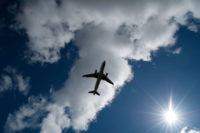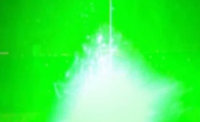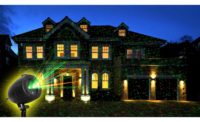 In a continuing effort to combat the growing problem of lasers directed at aircraft, the Federal Aviation Administration (FAA) has created a new website to make it easier for pilots and the public to report laser incidents and obtain information on the subject, FAA Administrator Randy Babbitt announced today.
In a continuing effort to combat the growing problem of lasers directed at aircraft, the Federal Aviation Administration (FAA) has created a new website to make it easier for pilots and the public to report laser incidents and obtain information on the subject, FAA Administrator Randy Babbitt announced today.
The website, which can be found at http://www.faa.gov/go/laserinfo, collects a wide array of laser information into one location. It includes links for reporting laser incidents, laser statistics, FAA press releases, and FAA research on the dangers lasers can pose to pilots, as well as downloadable videos.
“We will do everything we can to get the word out about how dangerous it is to point a laser at an aircraft," said U.S. Secretary of Transportation Ray LaHood.
Lasers can distract or cause temporary flashblindness and afterimages in pilots. Laser pointers are sometimes marketed as aides to find stars and constellations in night skies. Users may not realize that laser beams can reach aircraft, and that when they do, their beams are much larger than at the source. Additionally, imperfections in the windscreens or bubbles of cockpits and helicopters can cause the light to spread even further.
Laser event reports have increased steadily since the FAA created a formal reporting system in 2005 to collect information from pilots. Reports rose from nearly 300 in 2005 to 1,527 in 2009 and 2,836 in 2010.
This year, pilots reported 2,795 laser events through Oct. 20. Pilots have reported the most laser events in 2011 in Phoenix (96), Philadelphia (95) and Chicago (83).
The FAA began addressing the problem in 2005 by encouraging pilots to report laser events to the nearest air traffic control facility and requiring facilities to immediately relay that information to local law enforcement agencies. In June 2011, the FAA announced it would start imposing civil penalties of up to $11,000 against people who interfere with a flight crew by pointing a laser into the cockpit of an aircraft. The agency is currently working on 18 civil penalty cases.
The FAA also provided technical expertise to help Myrtle Beach, S.C. develop a law making it illegal to point lasers at aircraft. Myrtle Beach adopted its measure in September 2011, joining a number of other cities and states that now have laws in place making it illegal to shine lasers at aircraft.
Over the past few years, people have been charged under local, state and federal criminal statues for pointing lasers at aircraft, and legislation is pending that would make it a specific federal crime. The FAA is prepared to work with all law enforcement agencies to assist with criminal prosecutions.
The increase in annual laser reports is attributed to the availability of inexpensive laser devices on the internet; increased power levels that enable lasers to reach aircraft at higher altitudes; more pilot reporting of laser strikes; and the introduction of green and blue lasers, which are more easily seen than red lasers.


